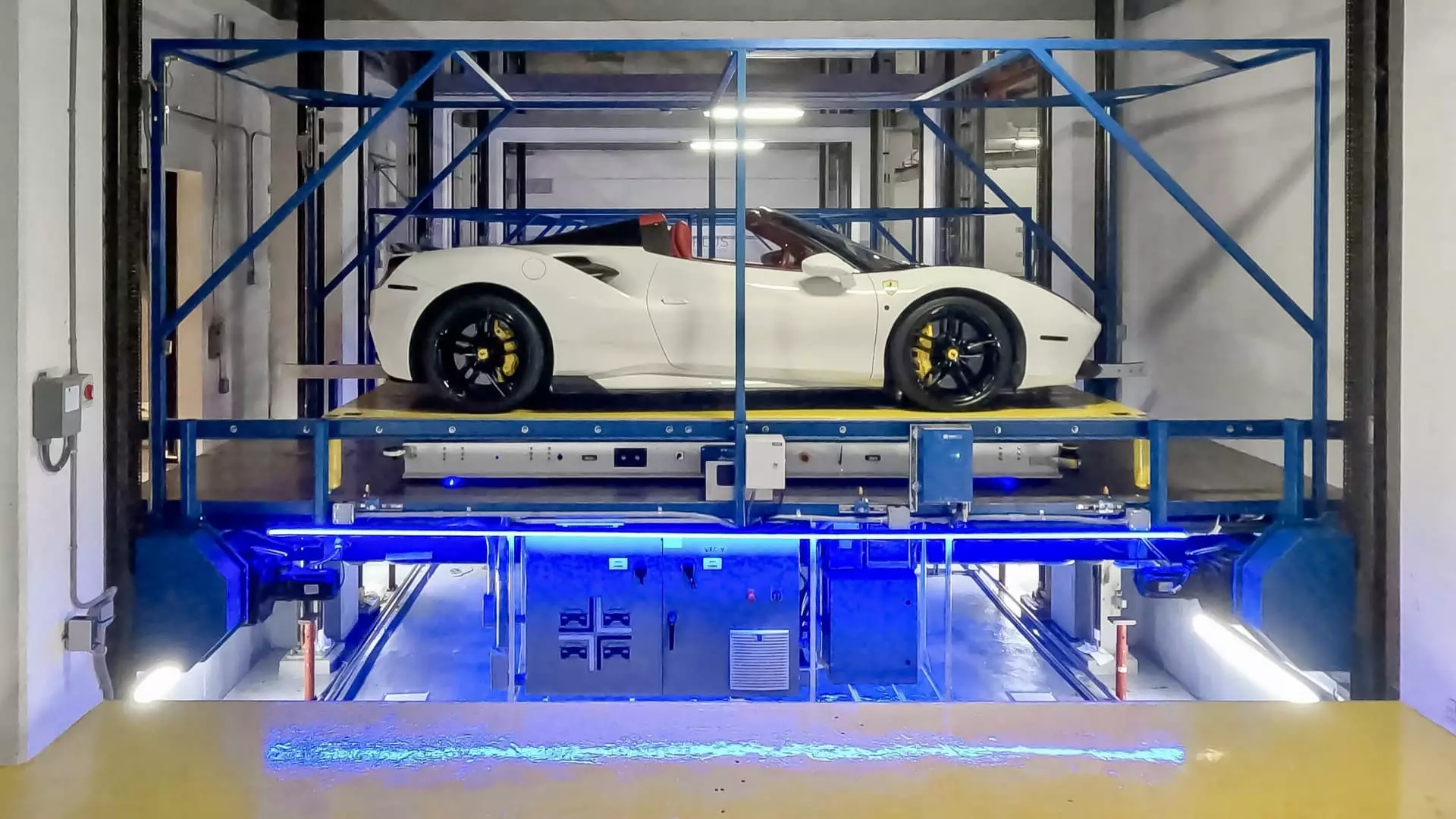The urban landscape continues to evolve, with the advent of automated technology redefining aspects of everyday life. Among the most transformative innovations is the automated parking system nestled within high-end residential buildings. One such example is the Brickell House in Miami, a striking 46-story luxury condominium that houses an astonishing automated garage designed to streamline and enhance the parking experience for residents. The innovative design accommodates 375 residences through an advanced melding of robotics and real estate, representing a powerful shift towards smarter living spaces in high-density urban environments.
This automated parking structure employs a sophisticated framework of car lifts, lasers, and embedded bar codes, effectively replacing traditional parking approaches. Residents enjoy the convenience of simply driving their vehicles into one of the five designated drop-off areas, where robotic valets seamlessly take over the task of parking, thereby eliminating the mundane and often frustrating search for a parking spot.
The Mechanics Behind the Magic
At the core of Brickell House’s automated system are 29 autonomous robots known as Automated Guidance Vehicles (AGVs). These 12-foot-long machines are engineered to efficiently maneuver vehicles, utilizing advanced technology that includes vision systems and laser guidance. The precise operation of these robots allows them to transport cars within a network of 13 garage levels without human intervention. By employing a calculated system of cooperation, the AGVs perform specific roles—some dedicated solely to moving vehicles on and off lifts, while others shuffle cars across the garage floor.
This innovation presents an attractive solution for urban developers aiming to maximize space utilization. As parking ramps and extensive lanes typically consume valuable square footage, automated systems can significantly condense these requirements, thereby freeing up space for additional residential units. Such enhancements can potentially increase property value and boost sales in these luxury condos.
The Economic Implications of Smart Parking
The economic landscape surrounding automated parking is steadily expanding. According to market research by Grand View Research, the global smart parking market was valued at $6.5 billion in 2021, and projections estimate it could grow to over $30 billion by 2030. This growth is predominantly driven by demand in North America, where luxury developments in urbanized locations are increasingly embracing advanced parking technologies.
High-end real estate comes with a hefty price tag for parking as well—some condo units in high-demand areas like Manhattan list parking spots at upwards of $300,000. At Brickell House, prospective buyers can find the allure of parking integrated into the overall price, such as a $15 million penthouse that conveniently includes access to this automated system. The cost of installation for these advanced systems varies but typically ranges from $20,000 to $80,000 per parking spot, which could collectively amount to millions in investment for developers.
As promising as automated parking systems may seem, the transition from conventional layouts is not without its complications. Early implementations have seen challenges, evidenced by past struggles faced by Brickell House. Prior to the adoption of the current AGV system, a failed parking project plagued the building, leading to a lawsuit against the original developers. Residents found their vehicles trapped in the malfunctioning system, culminating in an expensive legal battle that emphasized the crucial need for reliability in such advanced solutions.
Current operators like ParkPlus are aware of the historical pitfalls and remain committed to rigorous testing protocols, which have reportedly enabled smooth operations over long durations without errors. Their efforts reflect a wider industry trend towards ensuring reliable performance, which is essential for public confidence in automated systems.
As urban areas become increasingly dense, the pressure to find innovative solutions for everyday inconveniences like parking will continue to mount. Automated systems like the one at Brickell House are setting a precedent for what modern living can entail, heralding an era where technology complements urban dwellings.
The move toward smart parking is not merely a matter of convenience; it represents a broader shift in how we think about the integration of technology into our daily lives, enhancing efficiency and offering solutions to long-standing urban challenges. As these systems become more refined, and as lessons from past failures inform future designs, it is clear that the evolution of parking technology will play an essential role in shaping urban residential landscapes.

